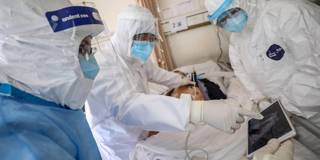
Coronanomics 101
In the fight against the COVID-19 pandemic, economists, economic policymakers, and bodies like the G7 should humbly acknowledge that “all appropriate tools” imply, above all, those wielded by medical practitioners and epidemiologists. Coordination, autonomy, and transparency must be the watchwords.
BERKELEY – Last week, G7 finance ministers and central bank governors vowed to use “all appropriate policy tools” to contain the economic threat posed by the COVID-19 coronavirus. The question left unanswered is what is appropriate, and what will work.